
I have a problem with the beauty and personal care industry. My problem is this: the marketing is so misleading. It’s way too common for a person to go out and purchase a product for their family or themselves that looks to be 100% safe… when in reality, it’s a chemical stew. I want us to take a close look at the harmful effects of chemicals in cosmetics and personal care products. We’re also going to get you a list of the top 5 ingredients to avoid in skin care products!
THIS POST PROBABLY CONTAINS AFFILIATE LINKS. IF YOU WANT TO READ THE FULL DISCLOSURE POLICY, CLICK HERE.
Why Must We Check Ingredients In Cosmetics, Personal Care Products, and Skin Care Products?
I don’t have time for anything but the truth, you guys, so let’s hop straight to it, shall we?
Why do we need to check ingredients in cosmetics? The truth is, no one else is looking out for you.
What I have learned to be a very scary assumption, is the assumption that because something is on a store shelf, it is safe. Hear me when I say this, though: That is FALSE.
While Canada does a little better than the US as far as banning toxic chemicals from use in personal care products, both countries are far behind where they need to be.
So, how many chemicals are banned from personal care products in Canada? 600. The USA currently bans 30. You are seeing that correctly, and this is not a joke. The EU bans 1400 chemicals.
Last I checked, North Americans are just as human, and just as susceptible to harmful ingredients in cosmetics and beauty products as our European counter-parts. So why are they more than doubling Canada with ingredient bans, and leaving the USA in the dust?
Well, that’s a really good question.
A little bit of history
In the USA, there has been no major legislation on personal care products in about 80 years. Can you just imagine the amount of new and toxic ingredients that have been discovered in that time? Not to mention all the new ways invented to add those toxic chemicals into our personal care and skin care products.
In Canada, you could say things are going a bit better. However, behind the veil, you’ll see that Canadian consumers are still very vulnerable.
The main thing that differentiates the European Union’s cosmetic regulations from those in the US and Canada is that the EU bases their restrictions on “precautionary principles,” and the US and Canada base their restrictions on risk.
What this all means is that the EU only allows things that have no shadow of doubt. The US and Canada will only dis-allow something if there is substantial evidence proving danger. This means that by the time we discover the danger of a certain product or ingredient, our toxic load could already be immensely heavy. Read more about the regulations in the US, Canada, and EU here.
Pulling back the veil on the link between toxins and disease
The truth is that as a Western society, we have grown in our ability to prolong life… even in the midst of disease. So, to the casual observer, it may seem all is well.
However, there’s so much more to the story. There are more people living with disease now, than ever before. And no, it’s not because the population is greater. The percentage of the population living with disease is truly higher now.
I highly recommend the book, “Sicker, Fatter, Poorer,” by Dr. Leonardo Trasande. He is a pediatrician, a leader in children’s environmental health, and a leading voice in public health policy.
In his book, he details the increasing rates of obesity, autism, ADHD, and infertility. While my focus in this article is toxic chemicals in cosmetics, in his book, Dr. Trasande sounds the alarm on the public health crisis inflicted upon us by toxic chemicals in our environment, our homes, and our personal care products.
We can’t be lulled into the security of a medical system that can “get us” to old age. What fun will the golden years be if we’re sick?
What Can We Do About The Harmful Effects of Chemicals in Cosmetics and Skin Care Products?
The first thing we need to realize is that the beauty products that cause cancer are not beautiful. In fact, they’re ugly, and they have no place on your body or in your home.
Unfortunately, there are more harmful makeup brands then there are truly safe skin care products.
Here are some very practical steps you can take to decrease your toxic load:
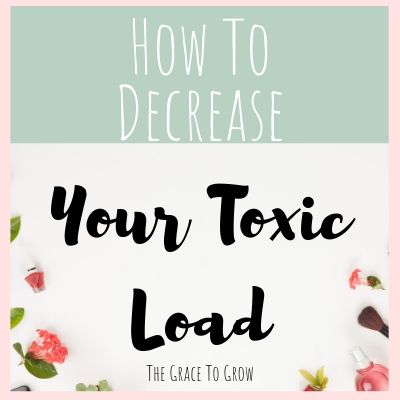
- Grow your awareness of the issue of toxins in personal care products. You need to know which ingredients to avoid in skin care products, and you should know the harm they can cause you if you continue to use them. Please know that using these products one time isn’t usually enough to cause a problem. The scary part is that these toxic chemicals in personal care products bio-accumulate. So the longer you use them… the heavier your toxic load.
- Understand that there are chemicals of concern in so many products we use daily. So, once you’ve grown your awareness on this issue, as stated in step 1, the next thing to do is check your own (and your family’s!) personal care and skin care products to check if any ingredients to avoid are in those (list of ingredients to avoid coming up soon!).
- Download the EWG app, or check it online. This is created by the environmental working group to notify the public of the safety of products. The EWG site has tens of thousands of products on it (personal care, cosmetics, skin care, cleaning products and more). You can scan barcodes, or, type in product names to see how it rates for safety. EWG product search is easy to use, however, not every single product is on there. The good news is, you can also look up ingredients. So, if the product you want to check isn’t on the site, just type in the ingredients one by one to see how they rate.
- Know and understand that safety in personal care products is not just a women’s issue. It is a health crisis that affects women, men, and children, either directly or indirectly. In fact, while women often suffer from imbalanced hormones, men are actually 15% more likely to be diagnosed with cancer, and sperm count has decreased 50% in the last 25 years. That means SOMETHING IS WRONG. No, it’s not all because of personal care products. There are many contributors. But this is a starting place. Toxic chemicals in personal care products contribute to infertility, neurotoxicity, reproductive toxicity, endocrine disruption, and cancer. No thank you to ALL of that.
Ingredients To Avoid In Skin Care Products.
Truthfully, there are many to avoid, but let’s start with 5 big ones:
FRAGRANCE
Please. If there’s one thing you will hear and remember from this, do not buy or use products that contain the ingredient “fragrance.”
Trust me, I used to love products with fragrance. I’m pretty sure I slathered on “Hawaiian Ginger” from Calgon for years in high school. Pretty sure that might date me. What I never considered at that time was… what does “fragrance” even mean?
Well, fragrance can be a whole lot of toxic things all thrown together. International law does not require every ingredient that goes into a fragrance to be disclosed. It simply has to state either “fragrance” or “parfum.” That’s just deceptive.
Some of the most offensive endocrine disrupting chemicals are found in fragrance. And take it from someone who has a disrupted endocrine system: it’s no picnic.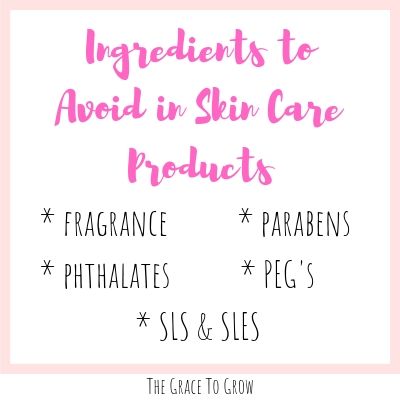
PARABENS.
These can be disguised using the following words or prefixes: methyl-, isobutyl-, propyl-, and others.
Parabens are preservatives used in all sorts of personal care and skin care products. These parabens absolutely are endocrin disruptors and can completely alter the way our hormones function in our bodies.
You can find it in shampoo, cleanser, body wash, lotions, and makeup foundation. You can find information from health Canada about parabens at this link. It’s a lot of concerning information that they’re passing off as totally fine.
PHTHALATES.
Phthalates are plasticizers. They are used to make things pliable, or to make fragrances stick to skin.
Phthalates are also endocrine disruptors, and have been shown to cause birth defects. They are most commonly used in personal care products. There are different types of phthalates (DEP, DBP, DEHP).
Canada has admitted that DEHP is a concern, and it has been added to the “Cosmetic Ingredient Hotlist.” What is the hotlist? The hotlist is defined by Health Canada as: “The Cosmetic Ingredient Hotlist (Hotlist) is an administrative tool that Health Canada uses to communicate to manufacturers and others that certain substances may be prohibited or restricted for use in cosmetics.”
So in other words… manufacturers can still use them if they really want to. You can find phthalates in fragrance (again with the fragrance!), hair spray, plastic, and nail polish.
POLYETHYLENE GLYCOL- PEG COMPOUNDS.
PEG’s are moisture carriers, thickeners, softeners, and solvents. The big concern here is carcinogens. Shampoo, sunscreen and creams are all big offenders for PEG’s.
SODIUM LAURYL SULFATE & SODIUM LAURETH SULFATE (SLS & SLES).
You know that lovely lather you get from your shampoo, body wash, and those bubble baths your kids love? Yea, most of the time that’s bad.
My son has really sensitive skin, and I always felt bad for him that he couldn’t have bubble baths. Now, I’m so thankful he couldn’t tolerate them, because it means he wasn’t exposed to them.
SLS and SLES can trigger allergies and they definitely cause skin irritation.
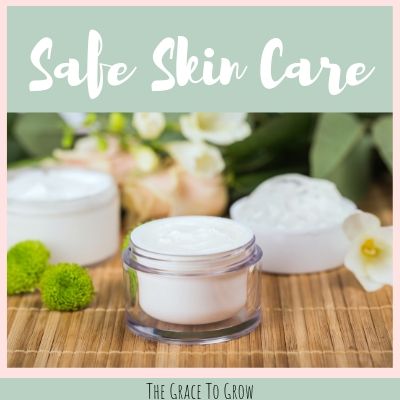 Safe Skin Care Products
Safe Skin Care Products
Now we’ve learned some truth about our personal care products and how safety is regulated in our countries. We’ve learned practical steps to decrease our toxic load, and we talked about 5 major ingredients to avoid in skin care products. Now let’s get to the good stuff. My top picks for safe skin care products.
I have to admit that I have spent way too much money experimenting with and testing out different clean skin care products. I was duped many times when I began my journey to safer personal care products, and bought many products that had green packaging, and used words like “natural.” Well, the truth is, not only were they awful products to use, they were also greenwashing.
Greenwashing is when a product or company markets itself as clean and pure… but they’re actually far from it.
So, let me save you some time, money, and trouble, and let you know what I found.
There ARE good, clean brands out there, but there is one that stands out in the pack (Don’t worry, I’ll tell you about more than just one!). Beautycounter makes great products, they perform rigorous testing, and best of all, they are advocating for safer products at all levels of government.
Beautycounter
The company I’m talking about is Beautycounter. You can find the link to their page right here. They boast a huge selection of truly safe products, including skin care (cleansers, moisturizers, toners, serums, masks, and more), makeup, shampoo and conditioner, hair spray, body lotion, sunscreen… they’re nearly the all-inclusive resort of personal care products.
I choose Beautycounter because of their values, and commitment to getting safe products into the hands of everyone… and protecting not just women, but also men and children, and our future.
Some other great picks
Here’s some others that i have tried, and generally find their products to be good:
Looking for DIY Beauty or Personal Care Products?
I like to make my own moisturizer for night time. I don’t wear it in the morning since it’s not great for putting makeup on after. But- it’s great for the skin, and as pure and clean as you can get. So, for my super frugal, DIY skin-repairing night moisturizer, all I do is:
- Get a 10mL, glass roller bottle
- Add 15 drops of “skin restore” from plant therapy to the roller bottle
- Top up the bottle with “near perfection” carrier oil from plant therapy.
It’s an investment to get the essential oil and the carrier oil, however, once you have them they last forever. So this is a super cost-effective way to have really good, effective, clean skin care.
When I’m dealing with an acne flare up, I like to use tea tree oil and lavender. I like to keep things simple, and these 2 oils work wonders.
For DIY sunscreen, check out this recipe from Wellness Mama. I’ve never made sunscreen myself, but this website is a trusted resource.
Want to join a growing community of women searching for answers to a healthier, more intentional life? Join our Facebook group!
Every week we have new topics, new challenges, and expert guests going live! You don’t want to miss it!
Looking for some more reading material?
Priorities- Do You Have Yours Straight?
How To Manage Time Like a Boss
The Ultimate Spring Cleaning List
DIY 5-Ingredient All Purpose Cleaner
The Ugly Link Between Sugar and Inflammation
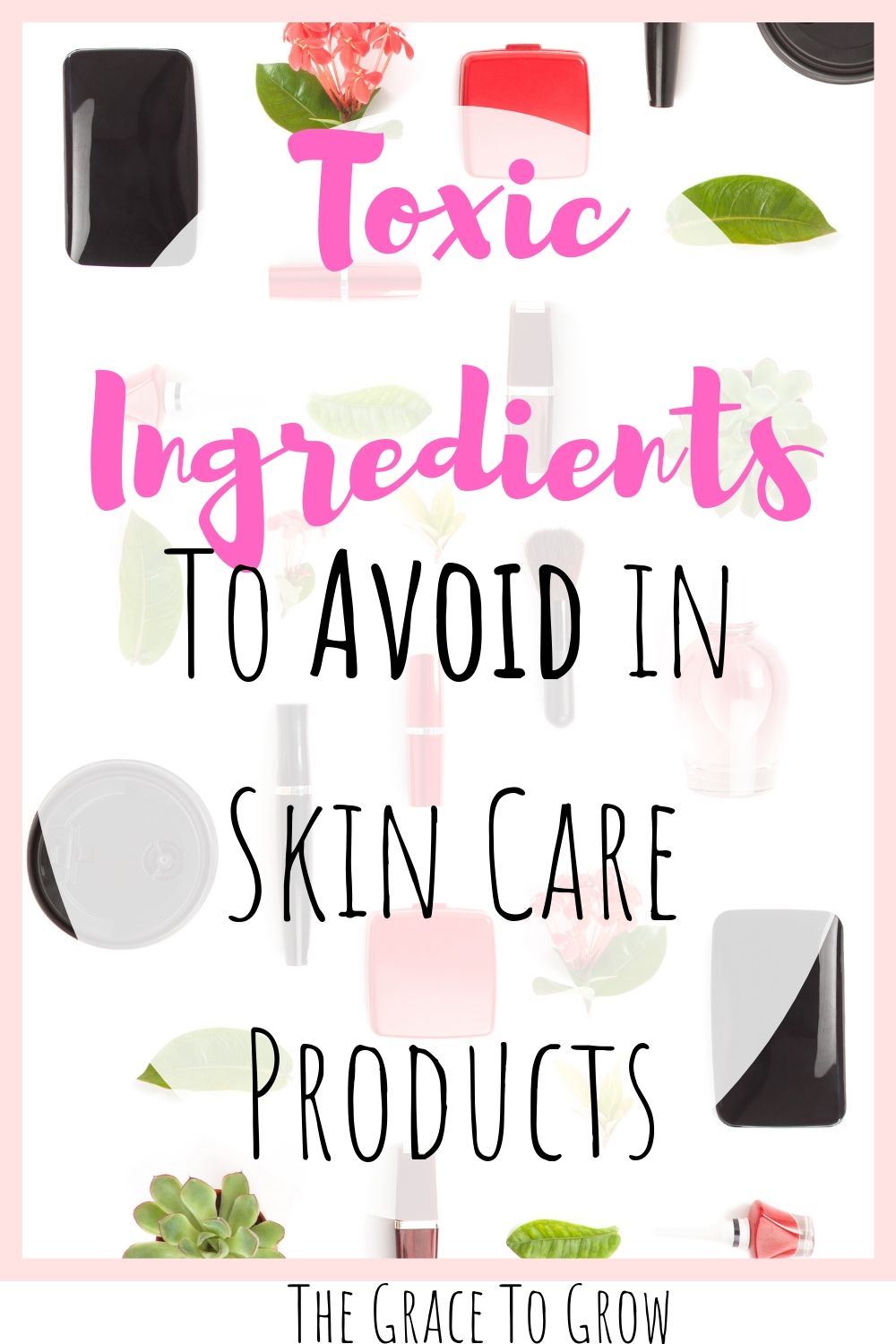




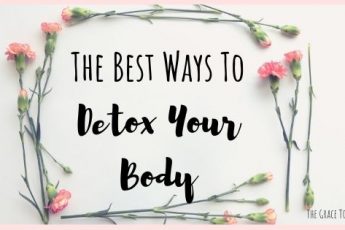
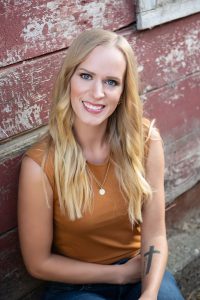
Leave a Comment